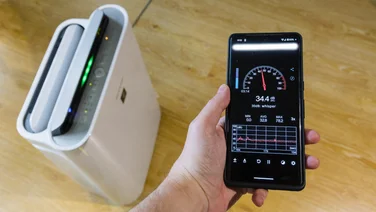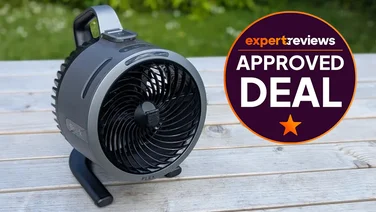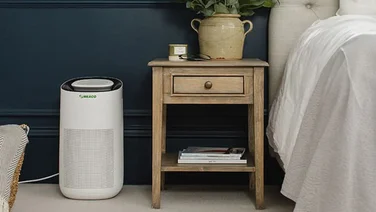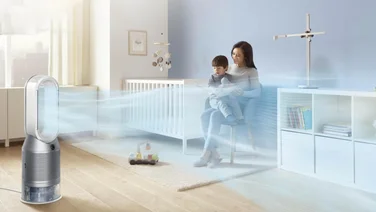To help us provide you with free impartial advice, we may earn a commission if you buy through links on our site. Learn more

Condensation occurs in virtually every home – you might see it collecting on windows during the winter, or in your bathroom after a shower. It happens when water vapour in the air makes contact with something cold and condenses back into water droplets – which is a perfectly natural process that you’ll remember from school science lessons, provided you were paying attention that day. It’s usually worse in winter because the temperature outside your home is much lower than inside, so external walls and windows are often cooler than elsewhere in the house leading to condensation.
We can’t stop moisture entering the air in our homes – it’s a side effect of lots of normal day-to-day activities – so a small amount of condensation is often unavoidable, but if you’ve got heavy condensation running down windows or even walls on a regular basis, it can cause damp spots that will lead to mould and mildew problems.
The good news is that there are plenty of things you can do to reduce the amount of moisture in the air, which will help to prevent condensation and any subsequent damp or mould problems.
READ NEXT: Our roundup of the best window vacuums
Where does all the moisture come from?
Identifying what’s causing so much moisture to form in the air inside your home is half the battle. Once you have a good idea of the sources, you can take steps to reduce or contain the moisture so that you have fewer issues with condensation.The most obvious source of moisture in your home is the bathroom – common sense will tell you that lots of hot, steamy showers will inevitably lead to more moisture in the air. Similarly in the kitchen, if you cook a lot, all that steam from your pots and pans has to go somewhere.
Drying laundry indoors is another big contributor – whether you hang them on your radiators or an airer, as your clothes dry out that water is evaporating into the air. But even if you prefer to use a tumble dryer, if it’s not properly vented, it can leak steamy air back into your house.
As humans, we lose moisture through sweating and even breathing – while the amount varies greatly, and depends on several factors, each person can exhale up to half a litre of water in just one day. When you add sweating to that, a house full of people can be contributing a significant amount of moisture to the air just by being in it.
How to stop condensation, or at least reduce it
There are lots of things you can do and usually the solution lies in a combination of these, rather than a single quick fix.
1. Ventilation

As we said earlier, condensation is usually worse in winter, and this coincides with the time of year when our windows are shut as we do everything we can to keep the warmth in and block out draughts. But we need to increase airflow to let moist air out of the house and there are several ways to do this. Firstly, don’t close trickle vents on windows – these allow a small amount of air to pass in and out even when the window is closed. Secondly, open windows when you can, particularly in bathrooms and kitchens. It may also help to keep a bedroom window cracked overnight, to let out all of the moisture produced by breathing and sweating while sleeping.Always switch on your kitchen extractor or cooker hood when cooking, and your bathroom extractor fan when showering or bathing. Don’t block extractor fans in winter, and, if it isn’t very efficient, consider getting it replaced. Also, don’t forget to keep the bathroom door closed while showering, so that the steam doesn’t spread through the house.
2. Laundry

Expecting people to stop drying laundry in the house during winter is simply unrealistic. But if you hang your washing to dry on an airer, try to do it near an open window so you don’t get a build-up of moisture in the air. Failing that, you may want to consider buying a dehumidifier. These plug-in gadgets remove moisture from the air, so running one near to your laundry airer will not only dry out the air, but may help your laundry dry faster too.If your usual wash programme doesn’t utilise the highest spin speed on your washing machine, it may be worth running a separate high-speed spin at the end of the cycle to ensure as much water is removed as possible, so less will make its way into the air as your clothes dry.
3. Insulation
Make sure your home is well-insulated. If you suspect poor insulation may be causing cold spots on walls or ceilings, this should be addressed to stop condensation from forming. And if you’ve got single glazing, condensation on windows will be an all too familiar sight, so it might be time to invest in an upgrade to double- or even triple-glazed windows.
4. Air flow
Condensation can sometimes form on walls behind furniture. Particularly when placed too close to an exterior wall as these walls are usually colder, pushing furniture tight up against them reduces air flow and allows moisture, and often mould, to accumulate. The solution is simple: allow a gap between the furniture and the wall to increase air flow, and check regularly to make sure condensation isn’t building up in this hidden area. Likewise, if there are rooms you rarely use, or don’t heat, ensure they are regularly aired by opening windows frequently.
What else can you do?
A few really simple things can have a big impact. Like keeping lids on pans while you cook – this keeps the steam contained, and will even help your pans come to the boil faster.
A dehumidifier isn’t only useful next to your clothes airer, it can also be handy in areas where you’re struggling to control moisture.
Keeping your thermostat set consistently and avoiding big swings of temperature inside your home can help reduce condensation. Of course, in these times of rising energy bills, most of us only heat our homes when absolutely necessary, and turn the heating off when we’re out or during the night so this tip might be a bit redundant. However, if you’re prone to turning the thermostat up and down repeatedly, it’s best to avoid this – find a comfortable temperature and stick to it.
Ultimately, keeping your eyes peeled for excessive condensation, and tackling the problem immediately, is the best way to avoid mould and damp problems.
How to remove condensation
Once condensation has formed, all you can do is dry the area with an old towel. A squeegee is a helpful tool for removing condensation from windows, tiles, and glass – be sure to place a towel at the bottom of the area to catch all the water as you squeegee it off, but don’t then dry the towel on the radiator as the moisture will just go back into the air, and the cycle will continue.








